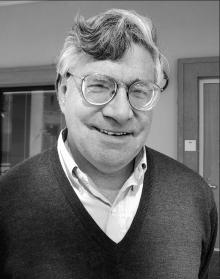
Wal-Mart has come a long way since 1962, when founder Sam Walton opened his first discount store in Rogers, Arkansas. With nearly 8,000 retail outlets in 15 countries, 2.1 million employees worldwide, and sales of $401 billion for fiscal year 2009 alone, Wal-Mart Stores, Inc. has become the largest company in the world and has changed the way the world does business.
In a new book titled "The Retail Revolution: How Wal-Mart Created a Brave New World of Business" (Metropolitan Books), Nelson Lichtenstein, professor of history at UC Santa Barbara, investigates the rise of the merchandising giant and the business model through which it achieved such immense financial success.
"Deploying computer-age technology, Reagan-era politics, and Protestant evangelism, Sam Walton's firm became a byword for cheap goods and low-paid workers, famed for the ruthless efficiency of its global network of stores and factories," said Lichtenstein. "But the revolution has gone further. Sam's protégés have created a new economic order that puts thousands of manufacturers, indeed whole regions, in thrall to a retail royalty."
Like the Pennsylvania Railroad and General Motors in their heyday, Wal-Mart sets the commercial model for a huge swath of the global economy, Lichtenstein explained. "For 120 years, the companies that manufactured things in America –– from toothpaste to TV's –– were on top, dictating the kind of products they would make and the prices at which they would sell," he said. "But the retail revolution subverted that manufacturing power, giving to Wal-Mart and the other big box retailers that followed its lead unprecedented economic and social power."
According to Lichtenstein, the two most significant elements of Wal-Mart's business plan are the decision to go discount in rural and small-town America, which had been underserved by high-priced mom-and-pop businesses, and the development of a truly revolutionary distribution system. Wal-Mart's system is based on hyper-efficient distribution centers where goods are not stored, but are transferred by truck to retail outlets within hours of receipt from the factory. "And after the 1990's, low wages and benefits proved crucial when Wal-Mart began to compete with unionized grocery chains," he said.
"Sam Walton was a beloved father-figure to hundreds of thousands of Wal-Mart employees or ‘associates,' as he called them," Lichtenstein continued. "But he was always a tightfisted manager who kept wages low, broke the wage and hour laws, and reminded workers that no one was so good that they could not be replaced."
Not all Wal-Mart employees are low-paid, however. Lichtenstein noted that company truck drivers, whose work is at the core of its distribution system, make four times as much as cashiers, and that's not likely to change.
"Wal-Mart has been willing to accommodate some of the complaints and demands made by environmentalists, anti-sweat shop activists, even by gay and lesbian Americans, but it draws the line at trade unionism," he said. "The country remains as hostile to unionism today as when Sam Walton founded Wal-Mart half a century ago.
Lichtenstein does see a chink in Wal-Mart's armor, however. "Today, Wal-Mart is staking much of its future on international expansion," he said. "But the sailing has not been all smooth. In Mexico, Canada, and the United Kingdom, the company is number one or two in the retail market. But Wal-Mart has failed in Germany, South Korea, and Hong Kong; and in China, store expansion has been painfully slow.
"Wal-Mart's stock price has been flat for nearly a decade because mass retailing is now a mature industry, so every competitor has adopted the once revolutionary innovations pioneered by the Arkansas discounter. Moreover, Wall Street fears that health, labor, and wage reforms proposed by the Obama administration will hurt Wal-Mart more than its unionized, high-wage, high-benefit competitors."
Lichtenstein, who is also director of the campus's Center for the Study of Work, Labor, and Democracy, is the author of "American Capitalism: Social Thought and Political Economy in the Twentieth Century."
Related Links



